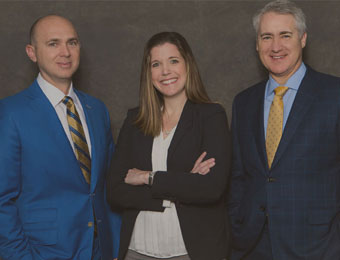Whose fault is it anyway? Pedestrian hit by a vehicle.
Whose fault is it anyway? Pedestrian hit by a vehicle.
We have all heard news reports of a pedestrian being struck by a vehicle. Here in Memphis, it seems pedestrians are hit at alarming rates.
In one common scenario, the injured pedestrian is hit while crossing a public street outside of the designated crosswalk. That is precisely what happened to a friend of mine last year. He was “jaywalking” when he was hit by a speeding vehicle. Thankfully, he recovered well and is back at work.
Interestingly, when I talked about his accident with our common friends, most assumed that because he was jaywalking, he is at fault and cannot recover for his injuries. However, despite what you might initially think, these types of accidents are not so straightforward. Drivers are not allowed to plow into pedestrians simply because they are crossing the street outside of a designated crosswalk. Indeed, these matters are highly fact-dependent. Was the driver talking on his or her cell phone, speeding? Was he or she under the influence of drugs or alcohol that might have slowed his or her reaction time down? What other factors might have contributed to the accident?
In a case involving a jaywalking pedestrian, whose fault is it anyway?
Tennessee law – comparative fault generally
Historically, the general rule was that if a plaintiff contributed to the accident, he could not recover for his injuries. In Tennessee, the rule initially stated that “if a party, by his own gross negligence, brings an injury upon himself, or contributes to such injury, he cannot recover;” for, in such cases, the party “must be regarded as the author of his own misfortune.” Whirley v. Whiteman, 38 Tenn. 610, 619 (1858). Subsequent court decisions followed that same general rule that a plaintiff’s contributory negligence completely barred recovery (citations omitted).
In 1992, the Tennessee Supreme Court overturned that general rule, commonly referred to as contributory negligence, and “conclude[d] that it [was] time to abandon the outmoded and unjust common law doctrine of contributory negligence and adopt in its place a system of comparative fault.” McIntyre v. Balentine, 833 S.W.2d 52, 56 (Tenn. 1992). The Supreme Court discussed the two (2) different types of comparative fault systems used in various states around the country (i.e. pure comparative fault and modified comparative fault). Under a pure comparative fault system, “a plaintiff [that is] responsible for 90 percent of the negligence that caused his injuries nevertheless may recover 10 percent of his damages.” Id. In a modified system, “plaintiffs recover . . . only if the plaintiff’s negligence either (1) does not exceed (“50 percent” jurisdictions) or (2) is less than (“49 percent” jurisdictions) the defendant’s negligence.” Id. Ultimately, the Tennessee Supreme Court rejected the pure form of comparative fault choosing instead to adopt a modified comparative fault system.
More specifically, the Supreme Court held that “so long as a plaintiff’s negligence remains less than the defendant’s negligence the plaintiff may recover; in such a case, plaintiff’s damages are to be reduced in proportion to the percentage of the total negligence attributable to the plaintiff.” Id.
What does Tennessee’s comparative fault system mean for injured plaintiffs?
Ultimately, the jury, as the factfinder, determines what fault, if any, to attribute to the plaintiff. The plaintiff’s proportional fault is then used to offset his or her ultimate recovery.
In a case involving a jaywalking plaintiff, the jury will undoubtedly hear about the plaintiff’s own fault for walking out into traffic, but that fact alone does not necessarily mean he cannot recover for his injuries. Of course, that does not mean the jury will ignore his fault. Indeed, a jury is likely to attribute some portion of fault to the plaintiff. The amount of fault a jury may give the plaintiff will, of course, vary from case to case.
To illustrate how a plaintiff’s fault effects his recovery, let’s assume a jury determines that a jaywalking plaintiff is 25% at fault and the driver defendant is 75% at fault, then the plaintiff’s recovery would be reduced by 25% of the total damages. Therefore, if the jury awarded $100,000 in damages, the plaintiff’s net recovery would be $75,000 (before case expenses & fees) taking into account his 25% fault.
Of course, these types of cases are highly fact dependent and, often times, difficult to prove. If you or someone you know was involved in an accident as a pedestrian or otherwise, you need an experienced attorney to help you analyze your potential case and guide you through the legal process.
If you need help with a potential personal injury claim, call us today at (901) 372-5003 for a free consultation.





Sorry, the comment form is closed at this time.